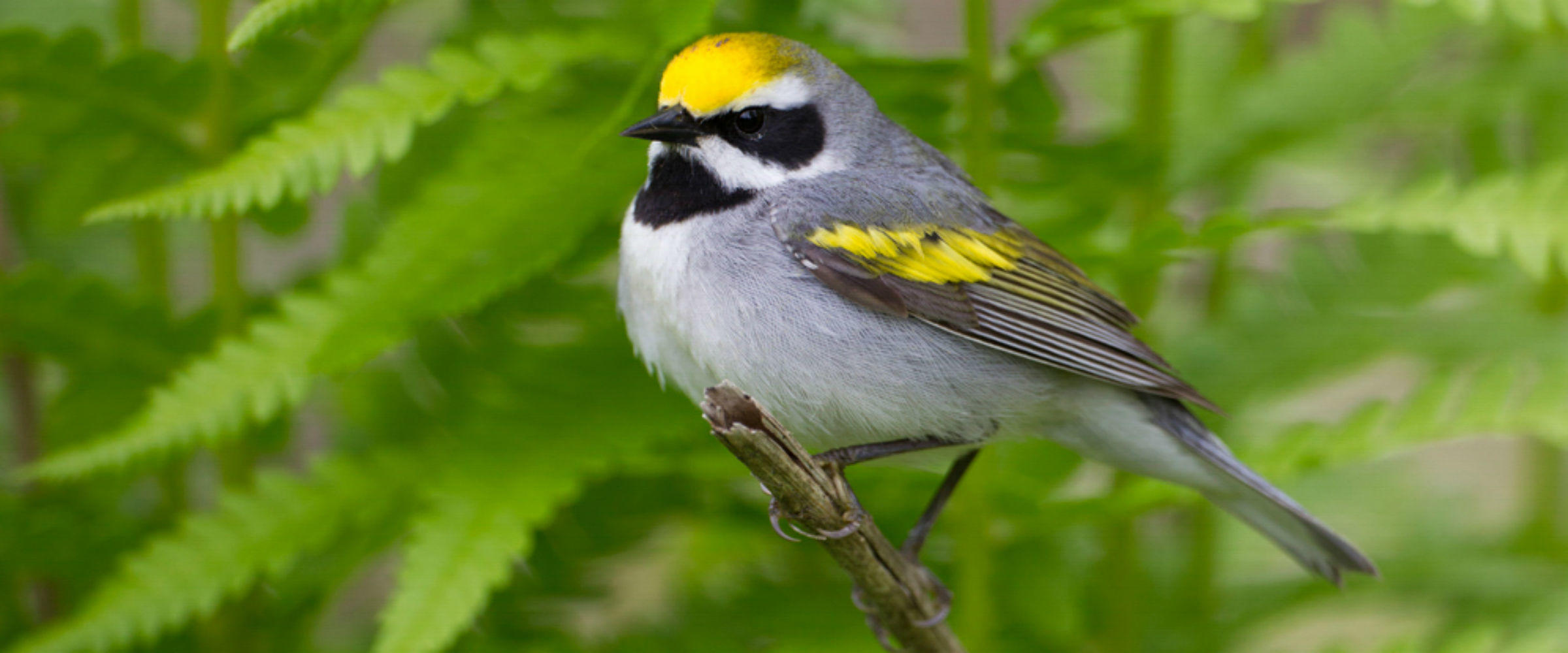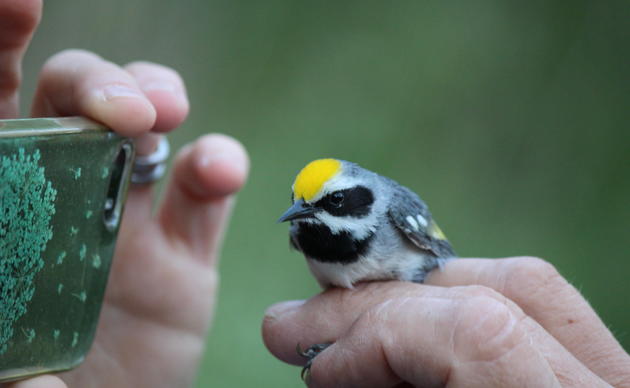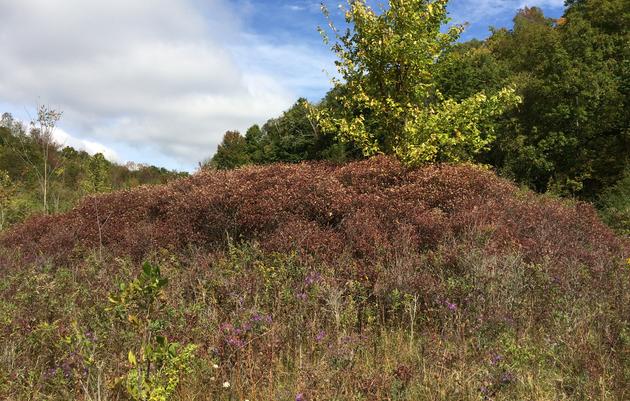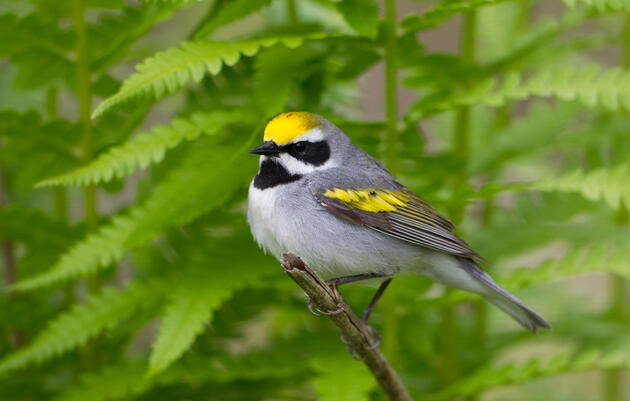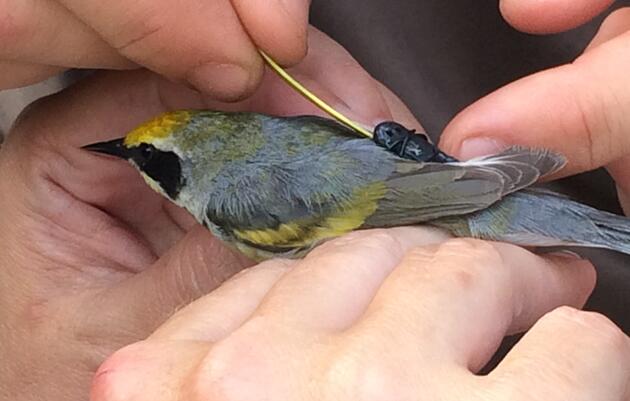The Golden-winged Warbler (GWWA) is an early-successional species that requires a somewhat unique habitat of sparse trees and shrubs with an understory of grasses and forbs, all adjacent to a forested area. Golden-wing populations are declining throughout all of their range as early-successional habitats revert to forest and are lost to human development. Based on Breeding Bird Survey (BBS) data, populations have declined, on average, 3.4% per year in the United States over the last 37 years of monitoring. These declines are resulting in extirpation of the species from areas that have supported GWWA for at least the last century. Vermont is currently the only New England state that hosts a population of Golden-winged Warblers.
The southern Lake Champlain Valley has been identified as conservation Focal Area for the GWWA by the GWWA Working Group, a national partnership working to protect this species and keep it from being listed as federally endangered. Prior to 2013, 20 GWWA individuals were documented within this focal area as part of the recently completed breeding bird atlas, and since then, Audubon Vermont (AV) has identified at least 70 additional individuals in the area, a number that has more than doubled previous population estimates. Over the past few years, we have been working to identify GWWA habitat via computer-based models and develop a more accurate picture of Vermont's population.
Our Gold-winged Warbler Conservation efforts are complemented by data from birding community scientists. Many contribute to eBird, a global online database for bird observations. eBird observations of Golden-winged Warblers, and closely-related Blue-winged Warbler, help us gain a better understanding of their populations over time throughout the Champlain Valley.
Submitting observations to eBird is simple, though documenting Golden-winged and Blue-winged warblers (often referred to as “winged-warblers”) has its challenges because hybridization creates numerous plumage patterns. To learn more about how to correctly identify winged-warblers and submit observations to eBird, check out this article.
Our work on GWWA includes:
- Developing a Geographic Information System (GIS) - based model for existing GWWA habitat
- Surveying known and potential habitats
- Monitoring post-management responses by GWWA
- Working with landowners to identify GWWA habitat that is in need of restoration
- Helping to secure funding to help defray the costs of habitat management
Much of the work in partnership with the Natural Resources Conservation Service (NRCS), Vermont Fish & Wildlife Department, US Fish and Wildlife Partners for Wildlife Program, the Vermont Land Trust, The Nature Conservancy, local trusts, and municipalities. The work is largely funded through grants from the National Fish and Wildlife Foundation (NFWF) and other private foundations, focusing on Golden-winged Warbler habitat restoration work. This project is part of a larger multistate effort to conserve this rapidly declining species.
Golden-winged Warbler News
Golden-winged Warbler Habitat Restoration Work in Charlotte
Vermont Fish & Wildlife, Audubon Vermont, and Natural Resources Conservation Service work together to improve shrubland bird habitat
How you can help, right now
Donate to Audubon
Help secure a future for birds at risk from climate change, habitat loss and other threats. Your support will power our science, education, advocacy and on-the-ground conservation efforts.
Visit Audubon
It's always a good time to visit the Audubon Center. Trails are open to the public year-round. Visit us daily from dawn until dusk! Donations are appreciated.
Events
Adults, preschoolers, foresters, photographers, sugarmakers and families will all find opportunities to connect with nature.

